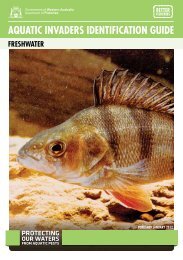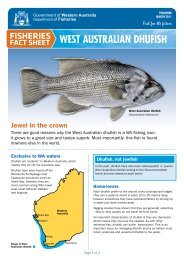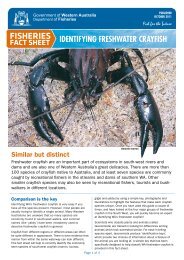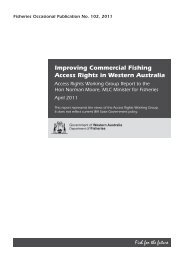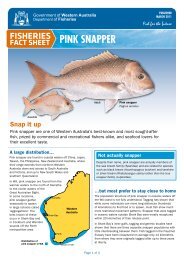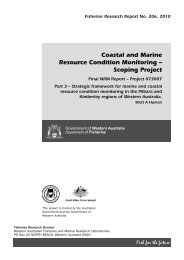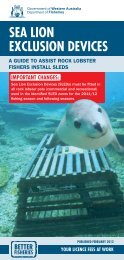Beachcombers Field Guide - Department Of Fisheries Western ...
Beachcombers Field Guide - Department Of Fisheries Western ...
Beachcombers Field Guide - Department Of Fisheries Western ...
Create successful ePaper yourself
Turn your PDF publications into a flip-book with our unique Google optimized e-Paper software.
Sponge<br />
Porifera<br />
<strong>Of</strong>ten mistaken for<br />
plants, sponges are commonly<br />
found by beachcombers because their<br />
skeletons are strong enough to survive<br />
the waves that wash them ashore. These<br />
sponges have lost their bright colours<br />
but generally retain the shape they had<br />
when alive. Sponges have no mouth,<br />
internal organs or nerves. Instead, their<br />
body is full of tiny holes,<br />
which help them to<br />
eat and breathe<br />
by fi ltering<br />
seawater.<br />
Photo: David Fairclough<br />
Did you know?<br />
Spicules are microscopic<br />
structures that provide a support<br />
or skeleton for the animal. These<br />
hard spicules are made of either<br />
calcium carbonate (limestone)<br />
or glassy silica, and vary in size<br />
and shape.





